Last updated: January 12, 2023
Article
Frijoles Canyon Tree Planting: Reforestation Efforts within the Las Conchas Fire Perimeter
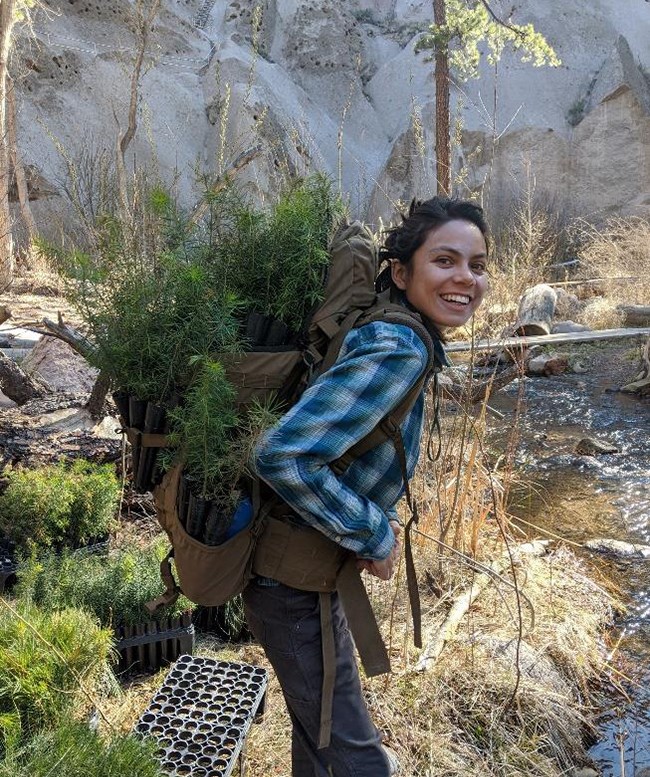
Photo credit: Carolina May
Bandelier National Monument’s Resource Management and Fire Ecology Programs are collaborating on a spring tree planting and monitoring project in Frijoles Canyon. Within the 2011 Las Conchas fire perimeter, the Frijoles Canyon landscape ranges from low severity burn areas with intact forest to areas that burned at high severity with no mature live trees remaining.
Planting trees in a three mile stretch of the canyon between Alcove House and Upper Crossing allows for data collection focused on growth and survival in a variety of environments. The data will be entered into a long-term ecological monitoring database, and the seedlings will be resurveyed by the Fire Ecology Program into the future. This project will provide information about the factors affecting seedling survival in Bandelier and will inform future planting efforts.
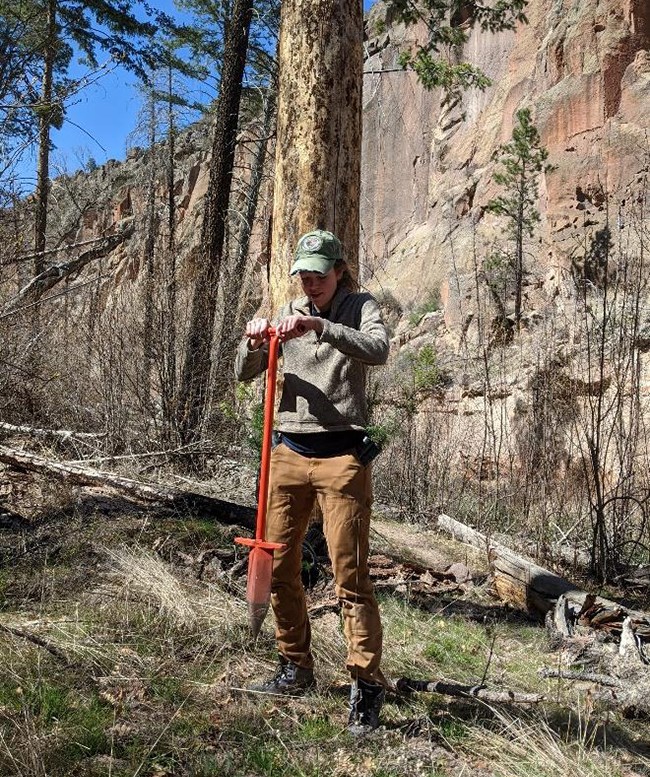
Photo credit: Bianca Gonzalez
Resource Management Intern Bianca Gonzalez and Fire Ecology Intern Carolina May conducted the planting and data collection from March 30th April 16th 2020. A total of 817 seedlings were planted as part of the monitoring project (426 ponderosa pine; 391 Douglas fir).
After the seedlings were planted, the following data were collected:
- location
- elevation
- species
- height
- canopy closure
- distance to mature trees
- photos were taken for documentation
- presence or absence of cover objects such as logs, rocks, or shrubs
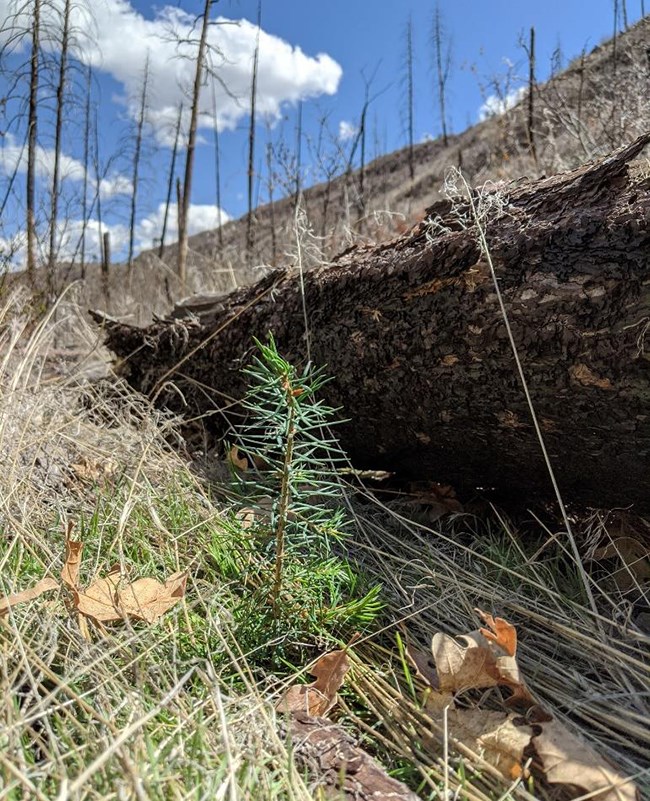
Bandelier. Photo credit: Carolina May
Previous research suggests that planting seedlings beside a fallen log , to be used as a "nurse log,” may allow for greater moisture retention and sun protection, increasing the survival rate of seedlings (Castro et al, 2011). Other cover objects, such as rocks or shrubs, were also used for planting sites.
When using a cover object, seedlings were planted on the north side to provide maximum sun protection throughout the day. Of the 817 trees that were planted, 386 were planted on the north side of a cover object, while 431 were planted without cover objects.
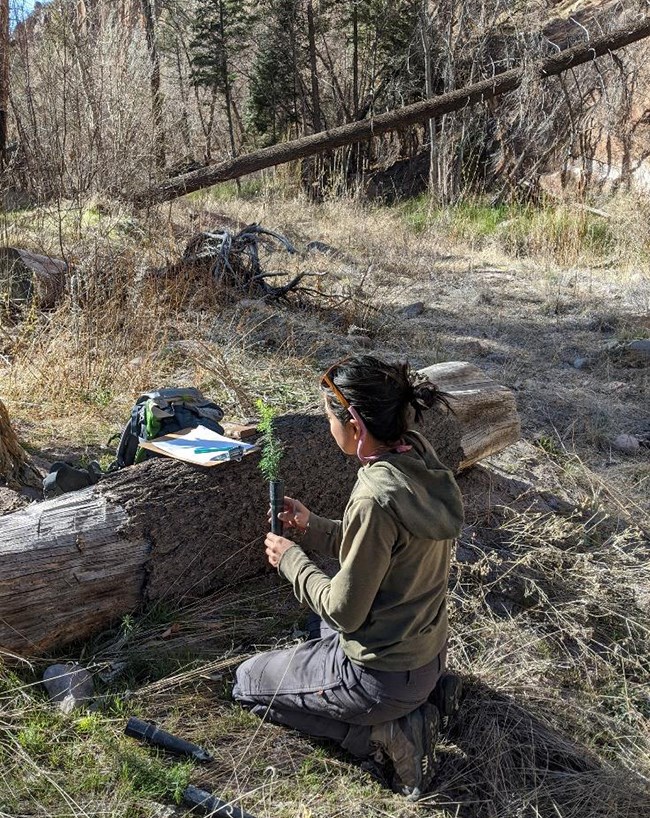
Photo credit: Carolina May
Slope aspect is another factor involved in identifying hospitable microclimates for seedlings.
North facing slopes receive less direct sunlight and tend to retain more moisture than slopes with other aspects, therefore the majority of planting sites were selected on the north facing slope of Frijoles Canyon.
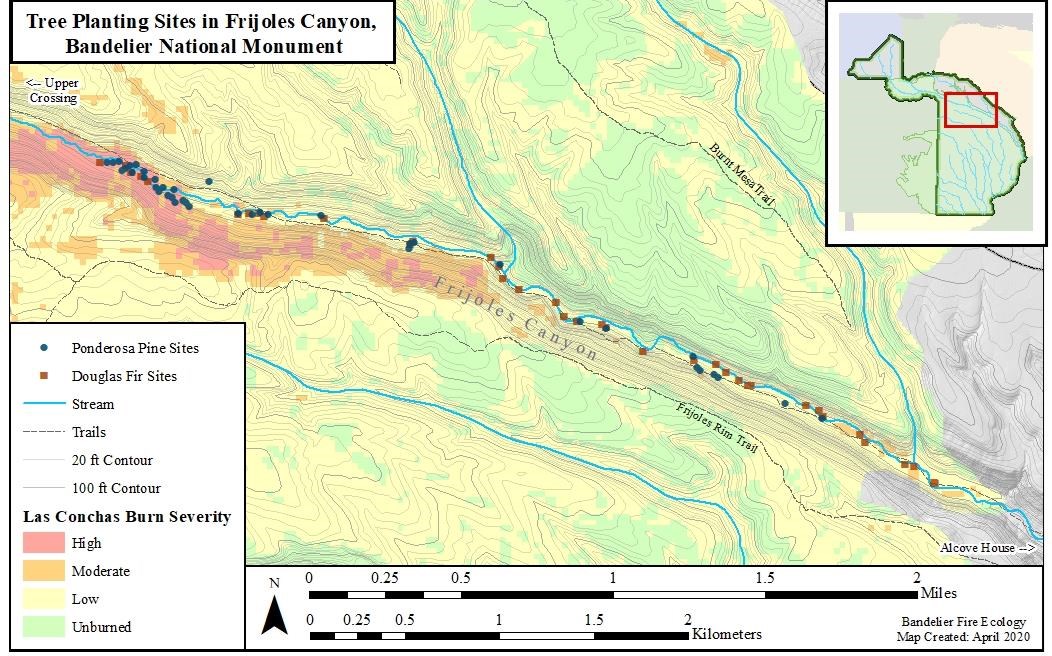
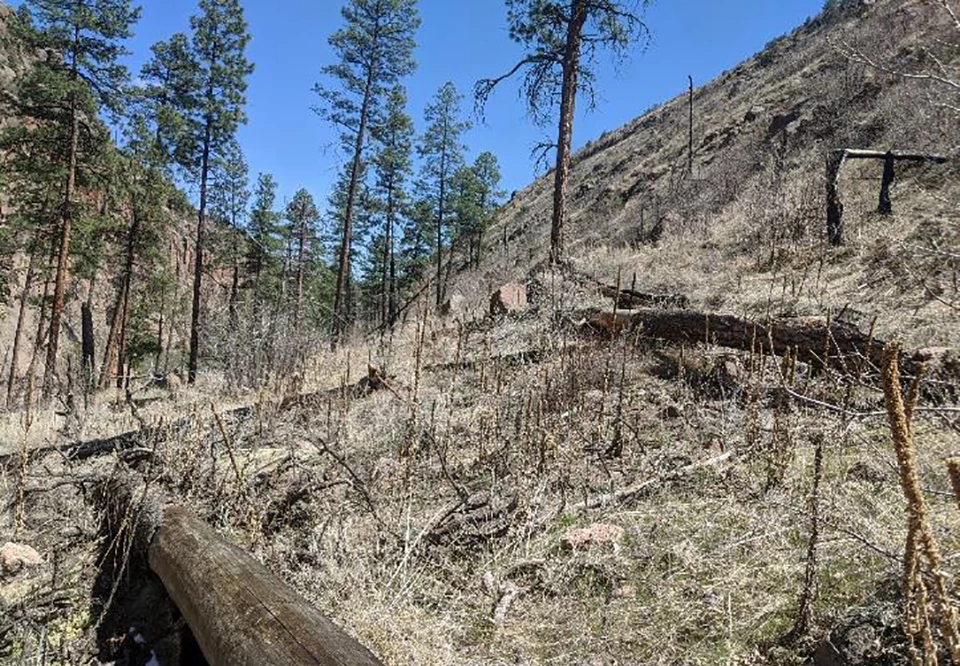
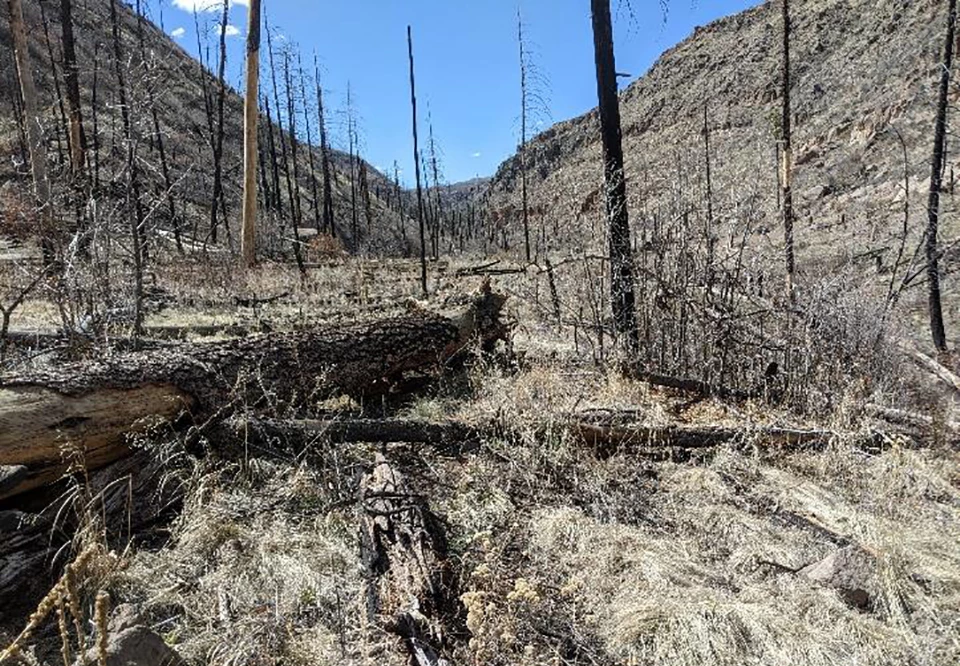
Left image
Ponderosa pine planting site on the edge of a low severity burn area in Frijoles Canyon
Credit: Photo credit: Carolina May
Right image
Ponderosa pine planting site in a high severity burn area with no mature living trees in Frijoles Canyon
Credit: Photo credit: Carolina May
| Ponderosa pine | 0.0% (0/40) | 42.5% (17/40) | 17.5% (7/40) | 40.0% (16/40) |
|---|---|---|---|---|
| Douglas fir | 15.4% (6/39) | 71.8% (28/39) | 2.6% (1/39) | 10.3% (4/39) |
| Total | 7.5% (6/79) | 57.0% (45/79) | 10.1% (8/79) | 25.3% (20/79) |
The Fire Ecology Program will revisit planting sites for long term monitoring in future years and collect data on seedling height, health, and survival. This data will be used to further understand factors affecting seedling survival, determine environmental thresholds for replanting success by species, and inform restoration strategies for areas burned by the Las Conchas fire. As changing climate conditions continue to challenge natural seedling regeneration, this empirical data to inform human assisted reforestation projects will become increasingly valuable.
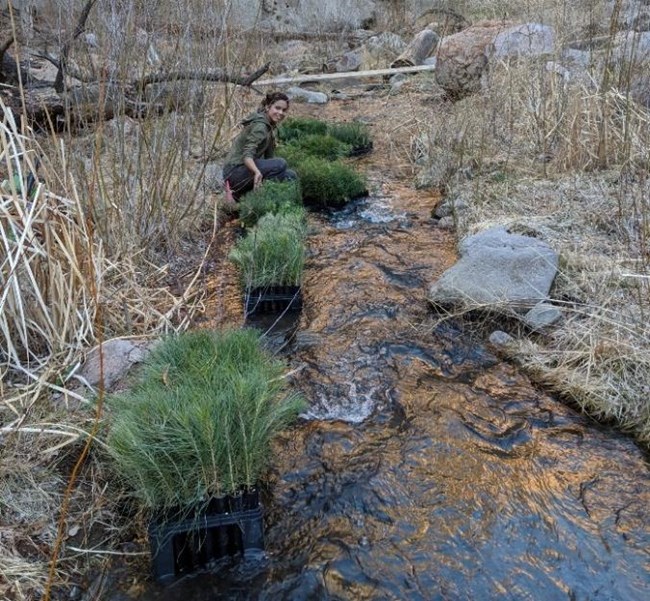
moisten seedlings before planting in Frijoles Canyon
Photo credit: Carolina May
Castro, J., Allen, C.D., Molina‐Morales, M., Marañón‐Jiménez, S., Sánchez‐Miranda, Á. and Zamora, R. (2011), Salvage Logging Versus the Use of Burnt Wood as a Nurse Object to Promote Post‐Fire Tree Seedling Establishment. Restoration Ecology, 19: 537 544. doi:10.1111/j.1526 100X.2009.00619.x
Haffey, C., Sisk, T.D., Allen, C.D. et al. Limits to Ponderosa Pine Regeneration following Large High Severity Forest Fires in the United States Southwest. fire ecol 14, 143 163 (2018). https://doi.org/10.4996/fireecology.140114316
Contact: Laura Trader, Ecologist, Bandelier National Monument, laura_trader@nps.gov
Tags
- bandelier national monument
- cohesive strategy
- maintain and restore resilient landscapes
- fy20
- fire ecology
- tree planting
- fire effects
- fire
- fire management
- reforestation
- las conchas fire
- collaboration
- frijoles canyon
- ecological monitoring
- national park service
- success stories
- wildland fire
- jmrlc
- natural resources
- cultural resources
